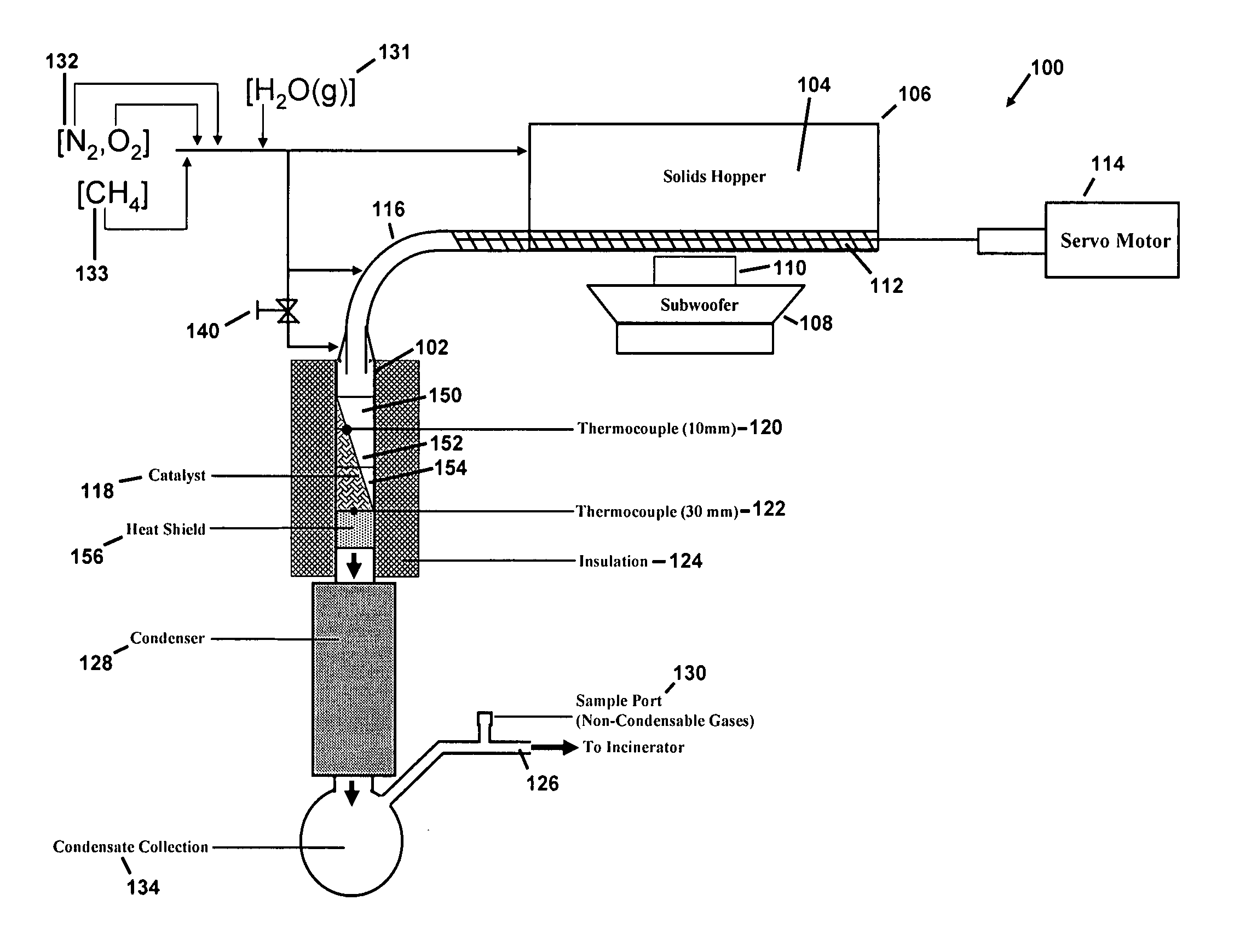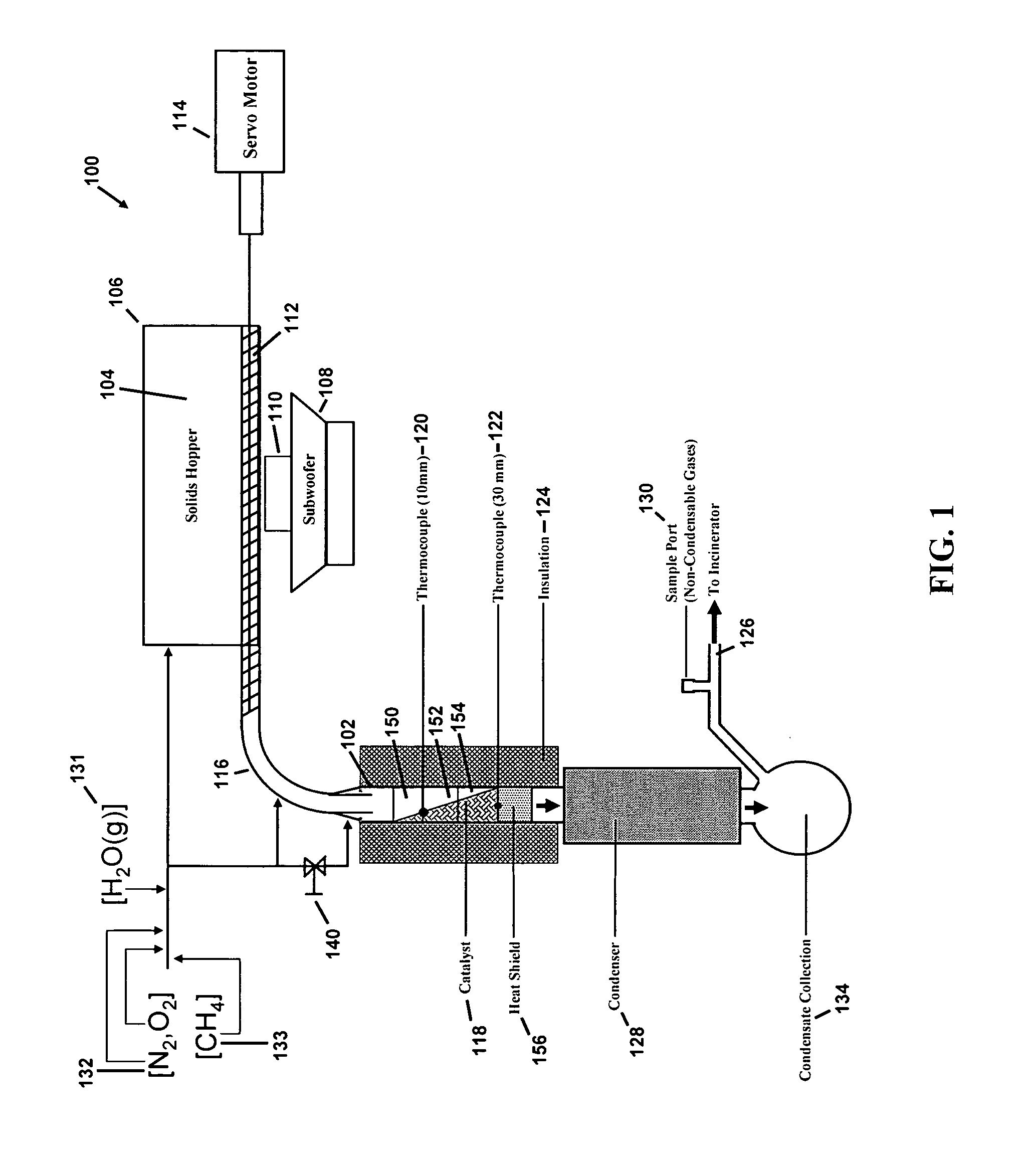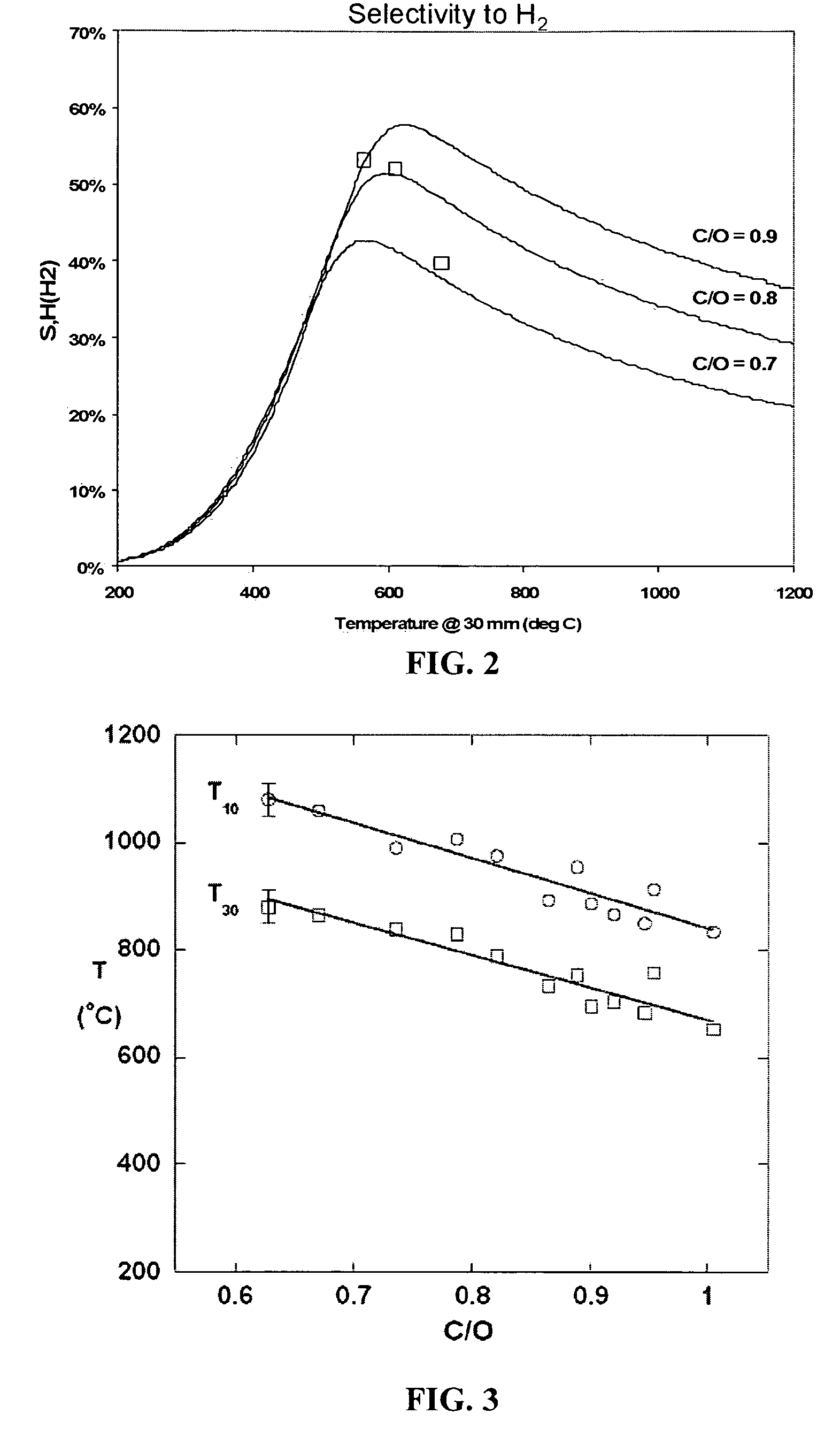Solid fuel volatilization to produce synthesis gas
a technology of solid fuel and volatilization, which is applied in the direction of combustible gas production, physical/chemical process catalysts, bulk chemical production, etc., can solve the problems of complex overall reaction, deactivation and poisoning of most gasification catalysts, and limited process capital costs of traditional btl equipment, etc., to achieve high selectivity, small and simple processes
- Summary
- Abstract
- Description
- Claims
- Application Information
AI Technical Summary
Benefits of technology
Problems solved by technology
Method used
Image
Examples
example 1
Experimental Reactor System
[0063]The reactor system 100 consisted of a reactor 102, which is a custom-made quartz tube of 19 mm inner diameter as shown in FIG. 1. The reactor 102 was glass blown by a glass worker at University of Minnesota and shaped using material made by Chemglass, Inc., having offices in Vineland, N.J. Approximately one (1) kg of solids 104 were loaded into a two liter solids hopper 106 and vibrated by a Sony Active subwoofer 108 Model no. SA-WM250 made by Sony Corporation having offices in New York, N.Y. The subwoofer 108 was connected to a GT0804 speaker 110 made by JBL, Inc. having offices in Woodbury, N.Y.
[0064]The solids 104 were moved to the reactor system 100 with use of a solid screw auger 112, i.e., a Servodyne brand mixer made by Cole-Parmer Instrument Co., having offices in Vernon Hills, Ill. Use of a subwoofer 108 and speaker 110 helped to prevent particle aggregation and also served to fill the solid screw auger 112 to capacity. The solid screw auger...
example 2
[0079]Additional experiments with various solid fuels were performed using the reactor described in Example 1. The specific procedure and starting materials are described below.
[0080]Methods. All experiments were conducted over Rh-based catalysts with a Ce additive on α-Al2O3 supports 17 mm in diameter and 10 mm in length consisting of either 45 or 80 pores per inch. A slurry of γ-Al2O3 washcoat has been added drop-wise, dried, and heated to 600° C. for 6 hrs where indicated before catalyst impregnation. Catalysts were prepared by the incipient wetness technique using aqueous solutions of Rh(NO3)3 and Ce(NO3)3.6H2O resulting in loadings of 2.5 wt % of the alumina support for each metal. Dried catalysts were calcined at 600° C. for 6 hrs in air. The quartz reactor tube as described in Example 1 was loaded with three catalyst-impregnated supports and a fourth 80 ppi blank alumina support wrapped in ceramic paper to prevent gas bypass. K-type thermocouples were inserted after the first...
example 3
[0097]This prophetic example provides additional variations that may be used in conjunction with the methods described in Examples 1 and / or 2. Variations in procedure may be necessary depending on the type of solid fuel being tested. For example, for solids with low melting points, the feed system should prevent melting in the metering device. This could be done using a heat exchanger as a water cooler.
[0098]Testing can further be done with other forms of materials. For example, to determine the effect of lignin, a three-dimensional polymer of phenyl-propane monomers, on carbohydrate processing, a cellulose sample containing 25 wt % lignin can be separated from Aspen wood chips by soda pulping.
[0099]In order to test directly with Aspen chips, a strategy for handling the approximately 0.5% ash can be used. The ash, of which the minerals Ca, K, and Mg make up over 90% in the form of oxides and carbonates, exhibits very low vapor pressure. [10] These nonvolatile components can be remov...
PUM
| Property | Measurement | Unit |
|---|---|---|
| Temperature | aaaaa | aaaaa |
| Time | aaaaa | aaaaa |
| Residence time | aaaaa | aaaaa |
Abstract
Description
Claims
Application Information
 Login to View More
Login to View More - R&D
- Intellectual Property
- Life Sciences
- Materials
- Tech Scout
- Unparalleled Data Quality
- Higher Quality Content
- 60% Fewer Hallucinations
Browse by: Latest US Patents, China's latest patents, Technical Efficacy Thesaurus, Application Domain, Technology Topic, Popular Technical Reports.
© 2025 PatSnap. All rights reserved.Legal|Privacy policy|Modern Slavery Act Transparency Statement|Sitemap|About US| Contact US: help@patsnap.com



